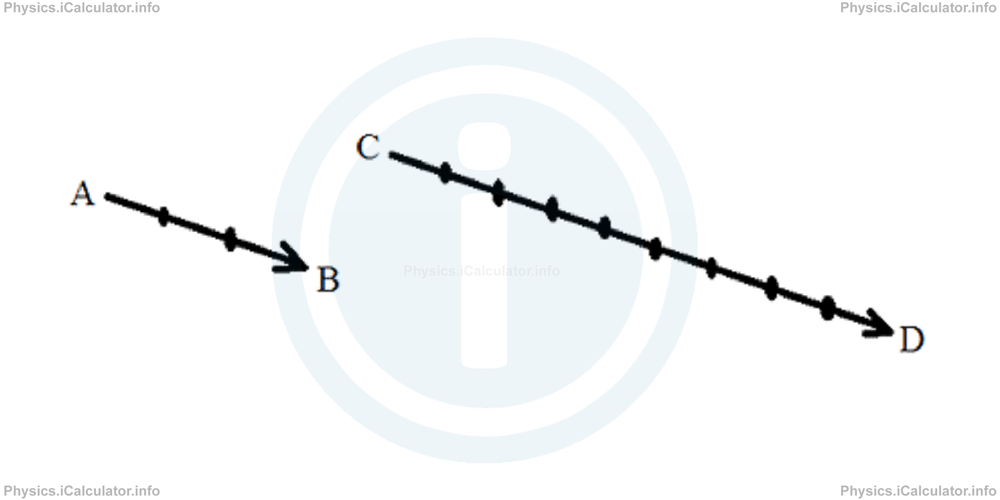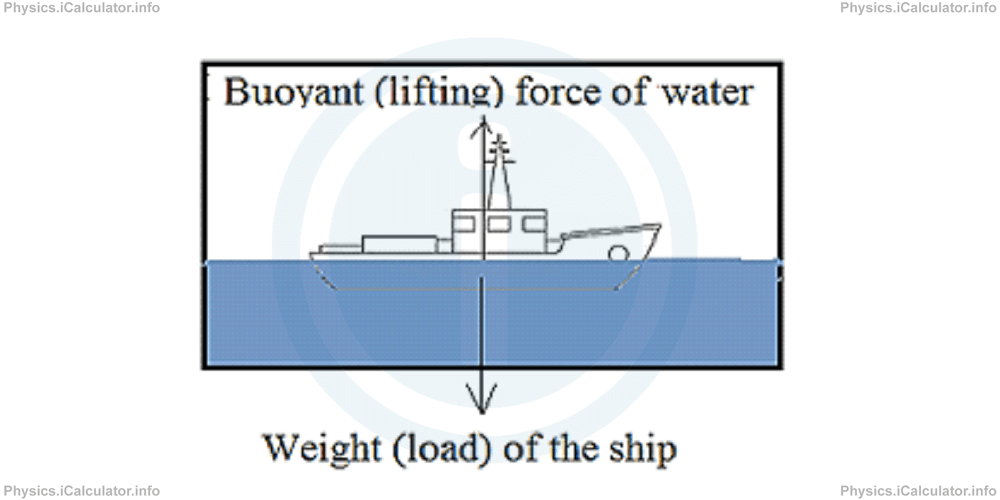Menu
Physics Lesson 2.3.1 - Multiplying a vector by a positive scalar
Please provide a rating, it takes seconds and helps us to keep this resource free for all to use
Welcome to our Physics lesson on Multiplying a vector by a positive scalar, this is the first lesson of our suite of physics lessons covering the topic of Multiplication of a Vector by a Scalar, you can find links to the other lessons within this tutorial and access additional physics learning resources below this lesson.
Multiplying a vector by a positive scalar
The similarity rule discussed in the "Introduction" section is applied in all the other fields of science as well. Vectors do not make any exception in this regard. Therefore, if we want to multiply a vector by a positive scalar, the result will be a new vector whose characteristics (direction, unit, the physical quantity they represent etc.) are all similar to the original vector except length. Thus, if we read in a certain passage that CD⃗ = 3 × AB⃗ we understand three things:
- Vectors AB⃗ and CD⃗ have the same direction (they are parallel or collinear)
- Not always they represent the same type of physical quantity. It only occurs when the scalar has no unit (we will discuss this point in the solved example shown below). However, in this case the scalar 3 has no unit. Thus, here both vectors are measured with the same unit
- The vector CD⃗ is triple in length the vector AB⃗
The figure below shows an illustration of this example.

From the figure, you can see that both vectors have the same direction, as they are parallel. However, the length of the vector CD⃗ is triple of the length of AB⃗ as CD⃗ is 9 units long and AB⃗ is 3 units long. Hence, we can write
We can generalize this rule by writing:
If a vector u⃗ is parallel to another vector v⃗ and the length of u⃗ is N times greater than the length of v⃗, then
where N is a number (scalar).
Example 1
A ship can carry a maximum of 20,000,000 N load when floating on pure water (on a lake). What is the extra load (in newtons) the same ship can carry if it is floating on salty water? Take the densities of pure and salty water equal to 1000 kg/m3 and 1030 kg/m3 respectively. For simplicity, take the gravitational field strength g ≈ 10 N/kg. The equation used to calculate the buoyant (lifting) force of water is F⃗ = ρ × g⃗ × V where V is the volume of the ship immersed in water and ρ is the density of water.
Solution 1
Since the ship is floating on water its weight is balanced by the buoyant (lifting) force of water. Density and volume of water are both scalar quantities. Only gravity (gravitational field strength) and buoyant force are vectors. Therefore, this is a typical example of multiplication of a vector by a scalar (where the result is a vector).

First, let's calculate the volume of the ship. Thus, for the ship floating on pure water we have
Since there is the same ship in both cases (the volume is the same therefore), when it floats on salty water, we have
= 1030 kg/m3 × 10 × N/kg × 2000 m3
= 20,600,000 N
Therefore, the ship can hold 20,600,000N - 20,000,000N = 600,000N more load than when it is floating on pure water.
You have reach the end of Physics lesson 2.3.1 Multiplying a vector by a positive scalar. There are 4 lessons in this physics tutorial covering Multiplication of a Vector by a Scalar, you can access all the lessons from this tutorial below.
More Multiplication of a Vector by a Scalar Lessons and Learning Resources
Whats next?
Enjoy the "Multiplying a vector by a positive scalar" physics lesson? People who liked the "Multiplication of a Vector by a Scalar lesson found the following resources useful:
- Positive Feedback. Helps other - Leave a rating for this positive (see below)
- Vectors and Scalars Physics tutorial: Multiplication of a Vector by a Scalar. Read the Multiplication of a Vector by a Scalar physics tutorial and build your physics knowledge of Vectors and Scalars
- Vectors and Scalars Video tutorial: Multiplication of a Vector by a Scalar. Watch or listen to the Multiplication of a Vector by a Scalar video tutorial, a useful way to help you revise when travelling to and from school/college
- Vectors and Scalars Revision Notes: Multiplication of a Vector by a Scalar. Print the notes so you can revise the key points covered in the physics tutorial for Multiplication of a Vector by a Scalar
- Vectors and Scalars Practice Questions: Multiplication of a Vector by a Scalar. Test and improve your knowledge of Multiplication of a Vector by a Scalar with example questins and answers
- Check your calculations for Vectors and Scalars questions with our excellent Vectors and Scalars calculators which contain full equations and calculations clearly displayed line by line. See the Vectors and Scalars Calculators by iCalculator™ below.
- Continuing learning vectors and scalars - read our next physics tutorial: Dot (Scalar) Product of Two Vectors
Help others Learning Physics just like you
Please provide a rating, it takes seconds and helps us to keep this resource free for all to use
We hope you found this Physics lesson "Multiplication of a Vector by a Scalar" useful. If you did it would be great if you could spare the time to rate this physics lesson (simply click on the number of stars that match your assessment of this physics learning aide) and/or share on social media, this helps us identify popular tutorials and calculators and expand our free learning resources to support our users around the world have free access to expand their knowledge of physics and other disciplines.